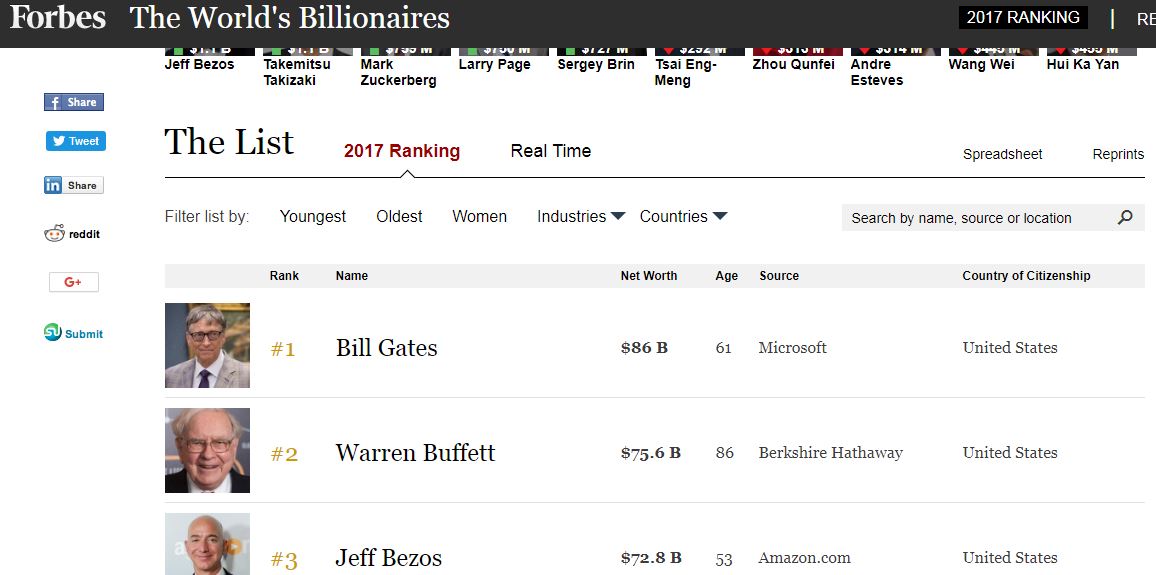Billionaires investigation
INVESTIGATION: Click on the Forbes link above to access the most recent list of the world's richest people.
Now use this information for complete an investigation into who these people are and what patterns we can identify if we look at them as a group. You are going to write a report on your investigation. Your report should include all of the following:
Now use this information for complete an investigation into who these people are and what patterns we can identify if we look at them as a group. You are going to write a report on your investigation. Your report should include all of the following:
- An introduction: what is the report about? Where will you find the information? What are the aims of your investigation?
- At least three sections which are on each of Qs 1, 2 and 3 below; you might add more to include other aspects you have investigated.
- Text which describes and explains what you have found.
- Bar charts, choropleth maps and other techniques to present your findings
- Suggest what this tells us about global equality in 2017. You must comment on how wealth is distributed around the world but could also discuss inequalities that you have noticed. You could share your own opinions here and even make suggestions for how we could make the world a fairer place to live..
- What countries do they come from? You could do a tally of the top 30 to see how many come from each country. What happens if you break it down by continent instead of country? How many come from outside North America or Europe?
- How old are they? How many of them are over 70? Under 40?
- What about gender? How many are men and how many are women?
- What other information could you analyse about the people on the list - what about how they made their money? What kind of business are they in? Are they self-made or did they inherit their wealth.
